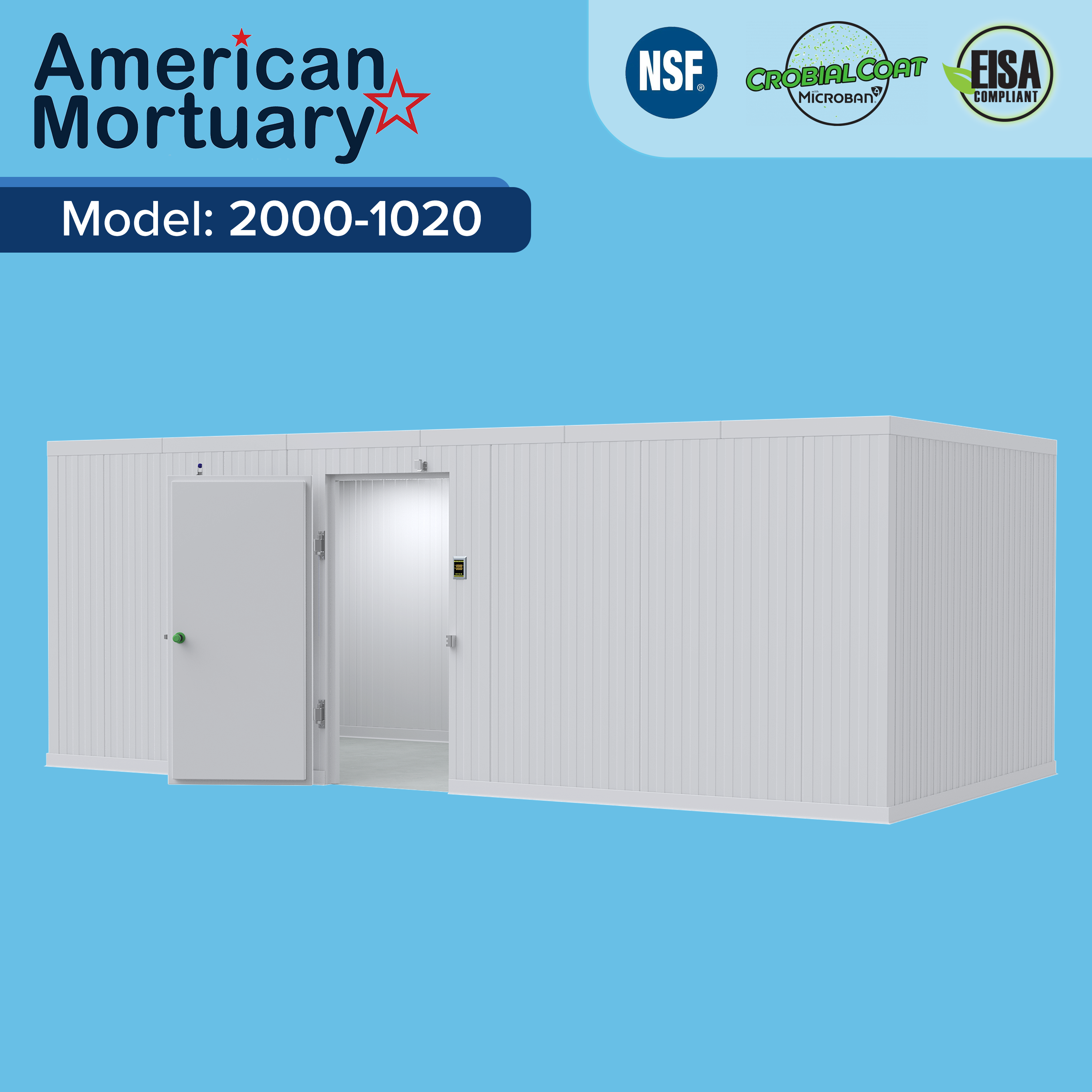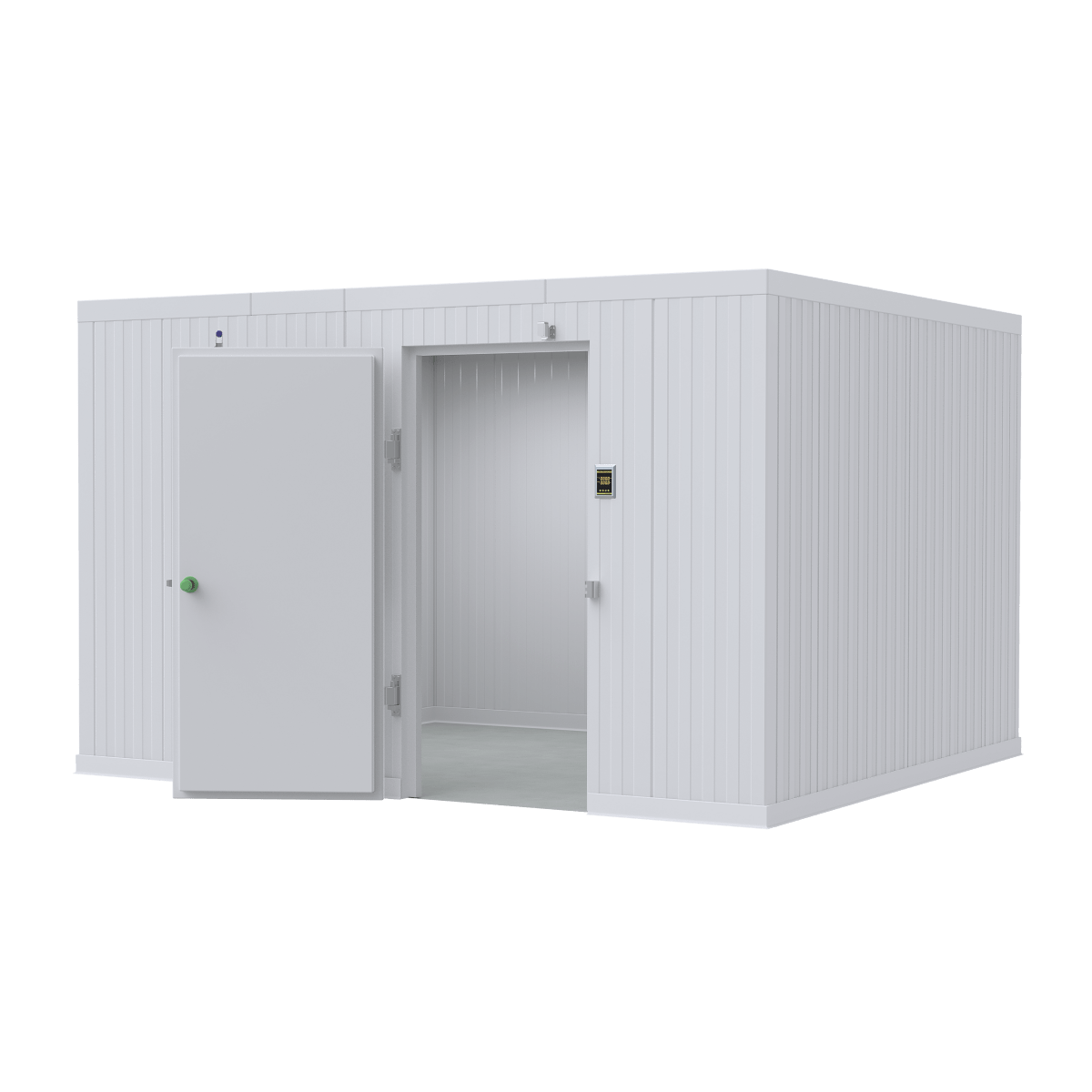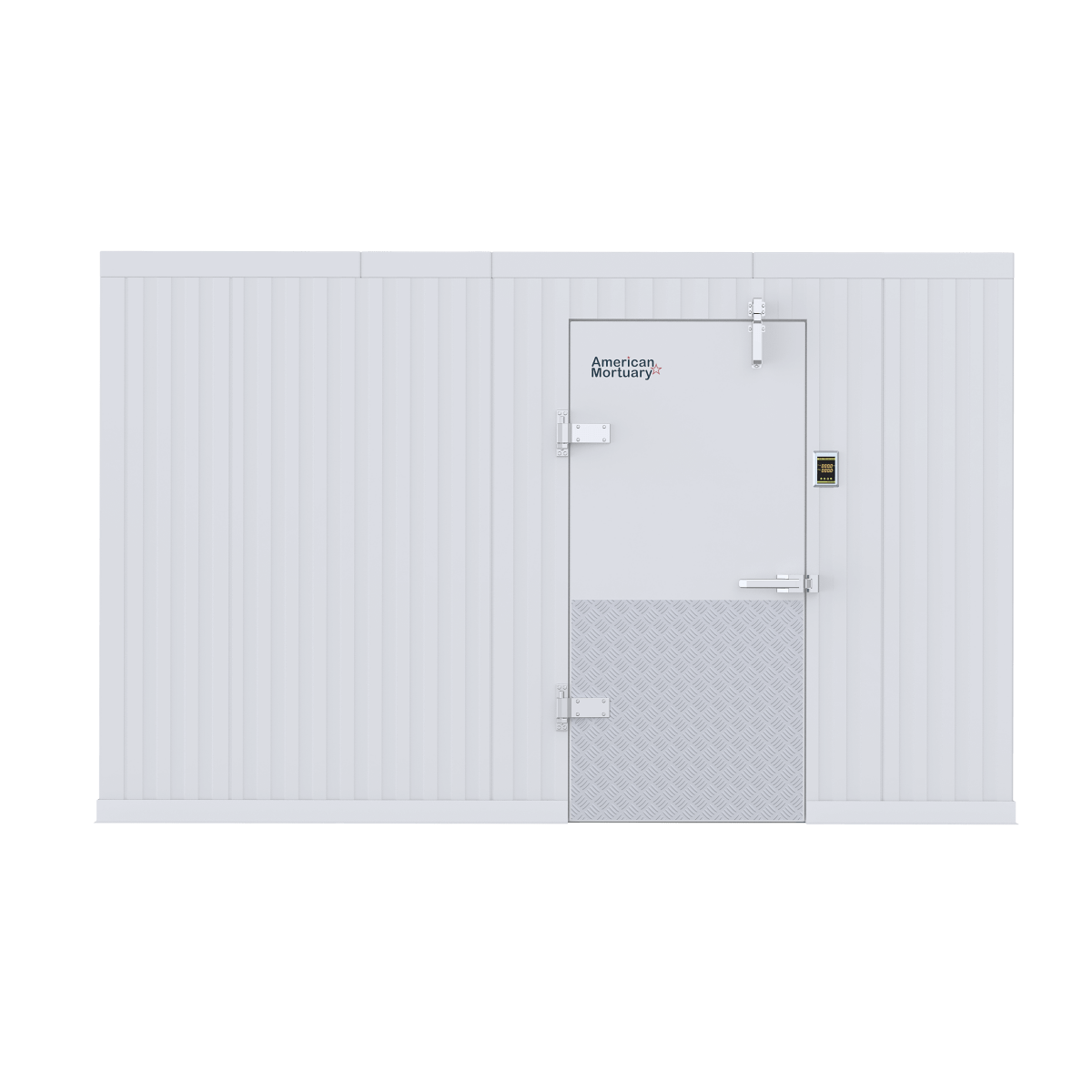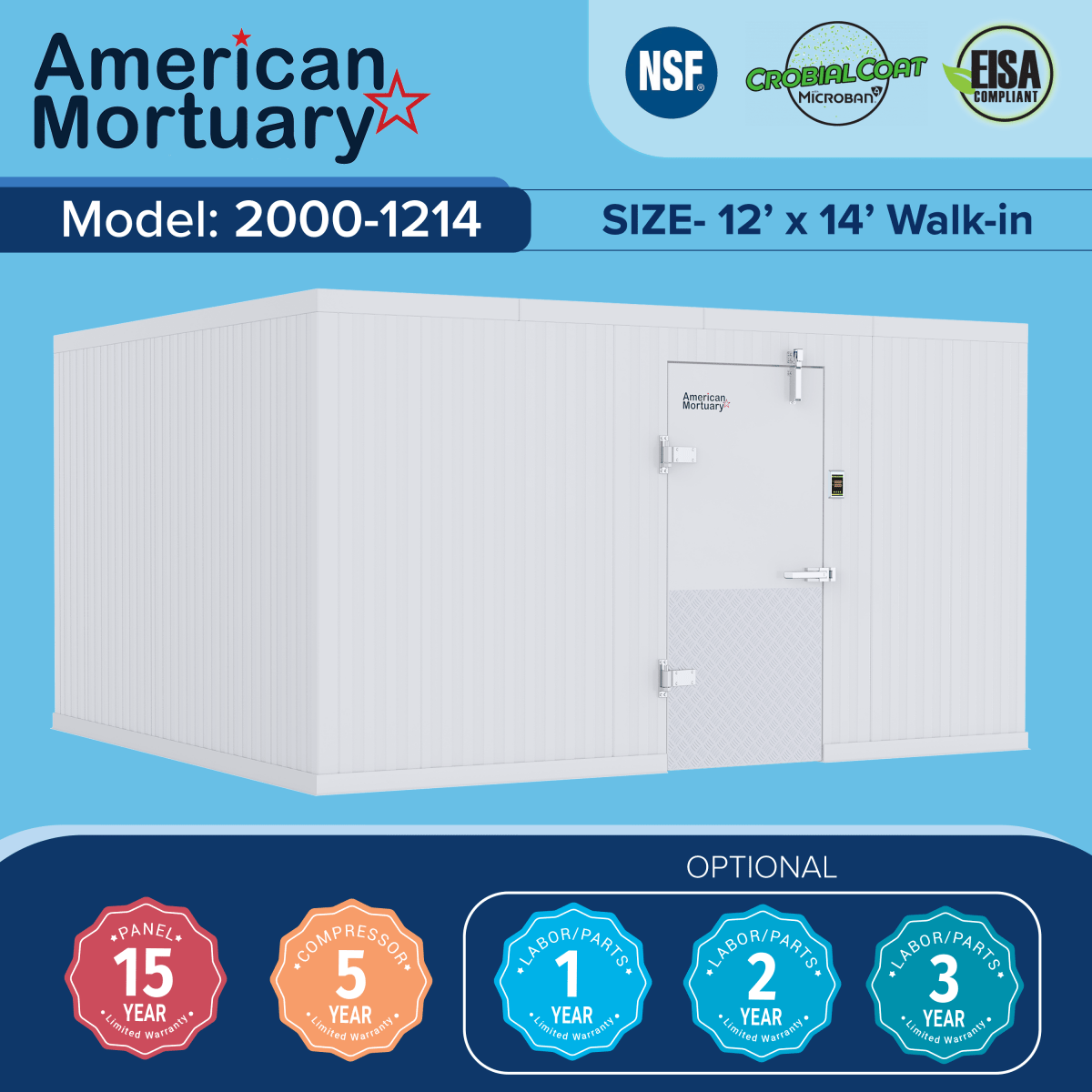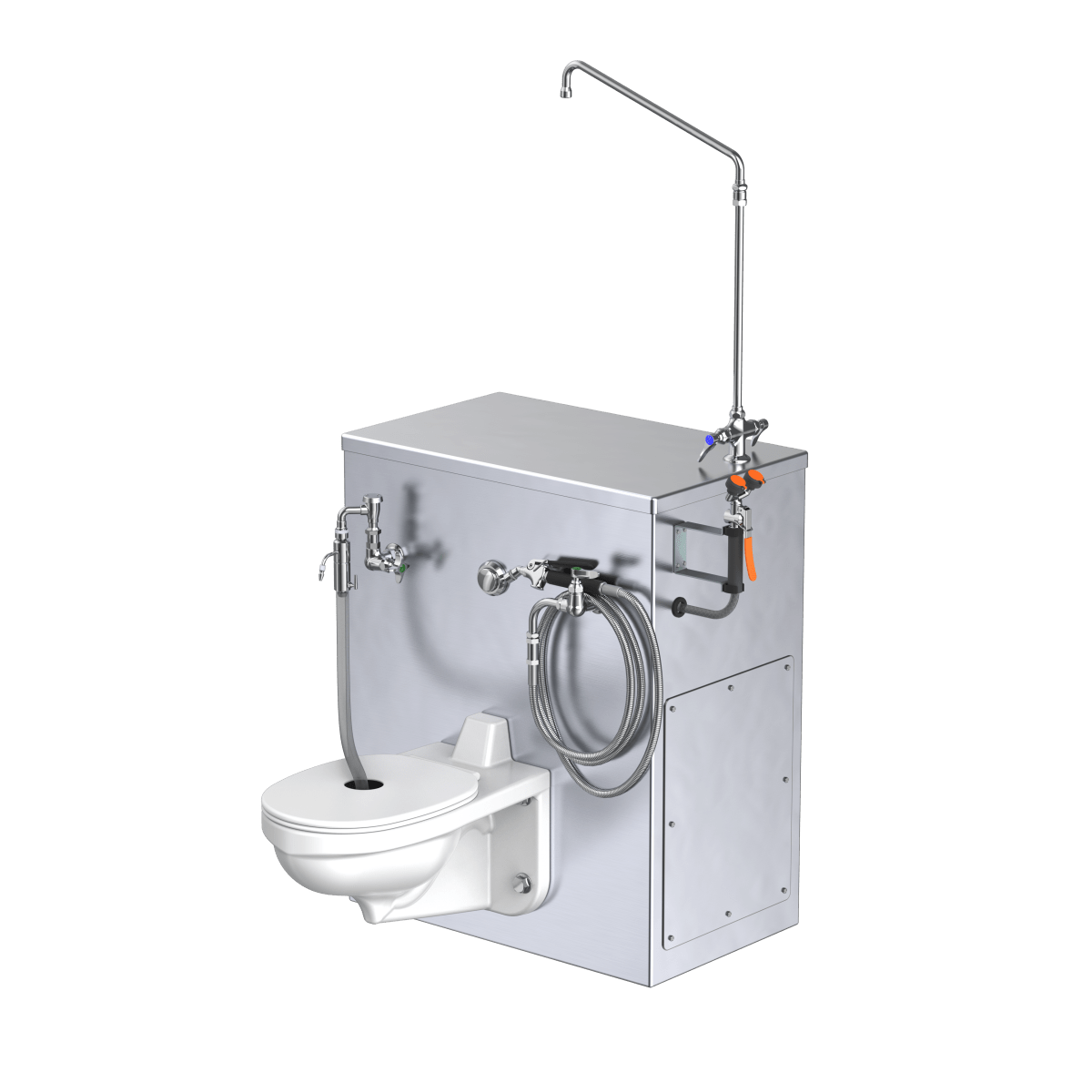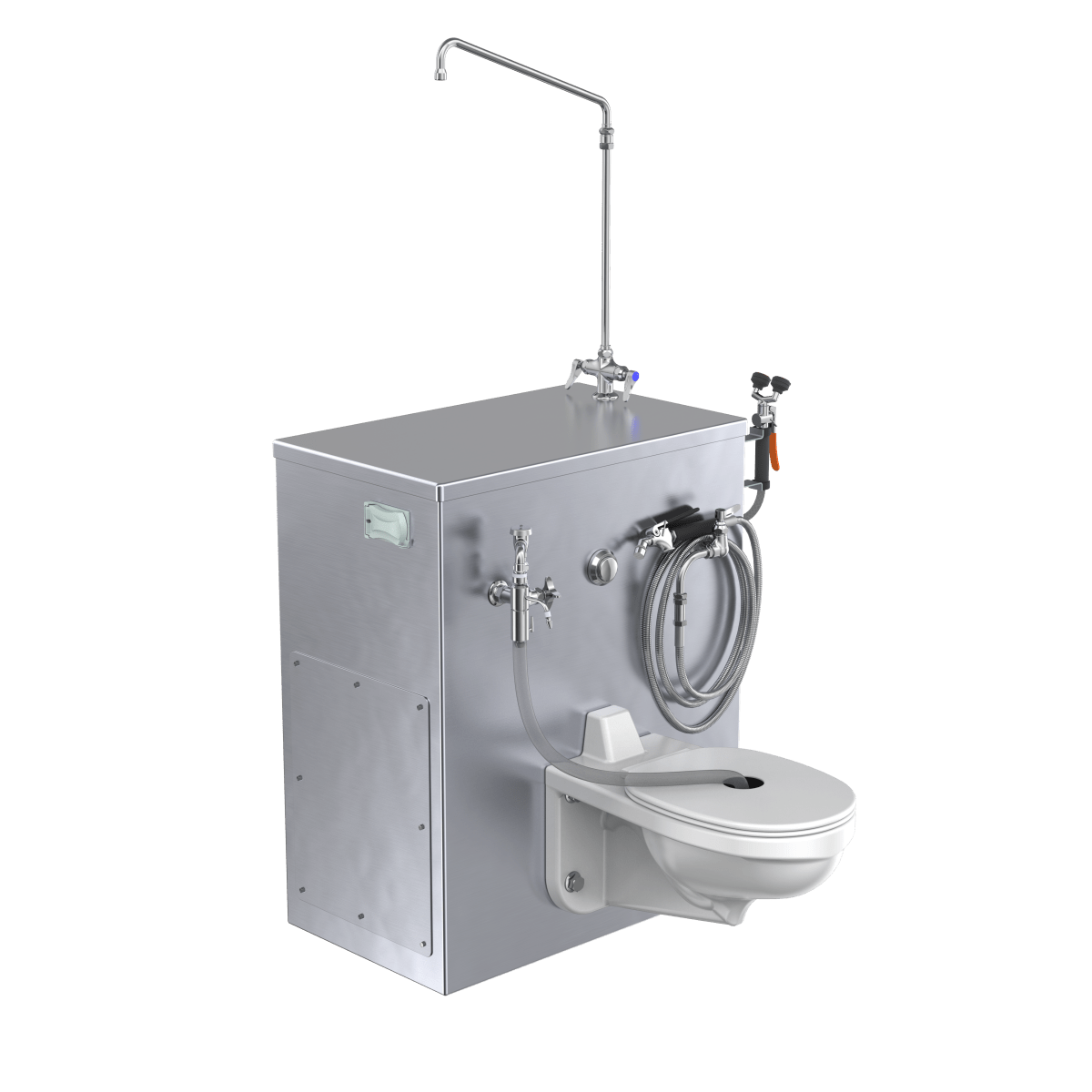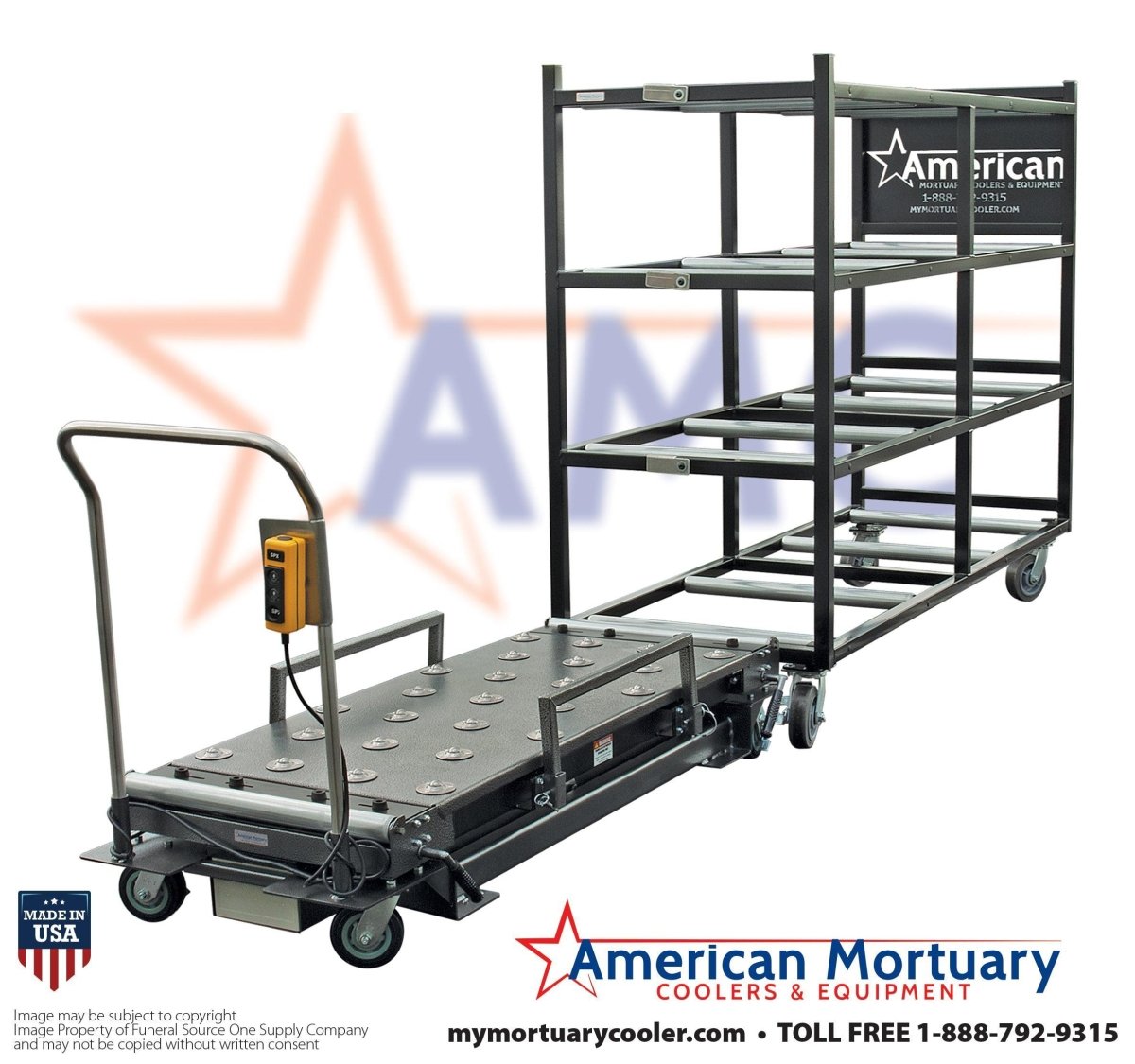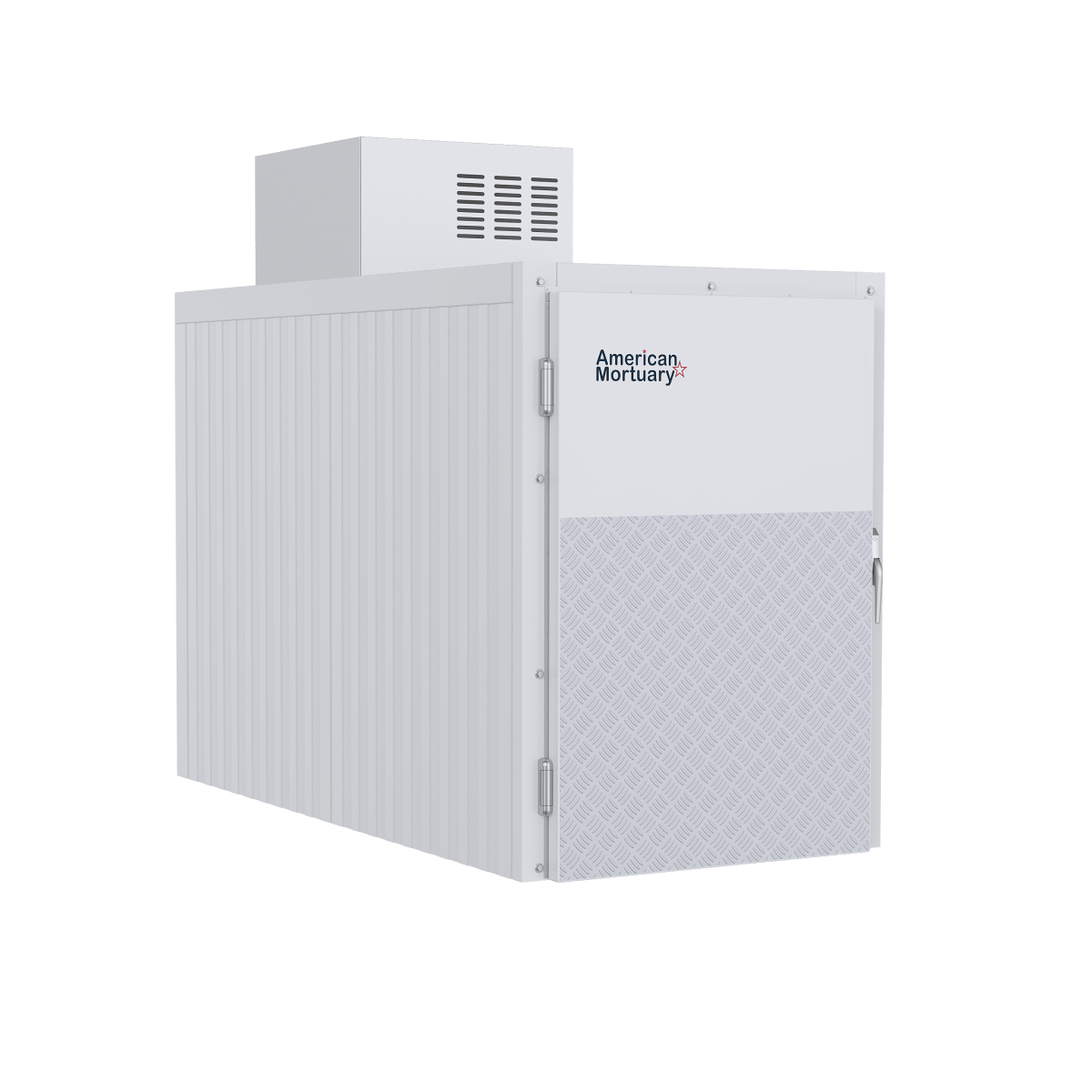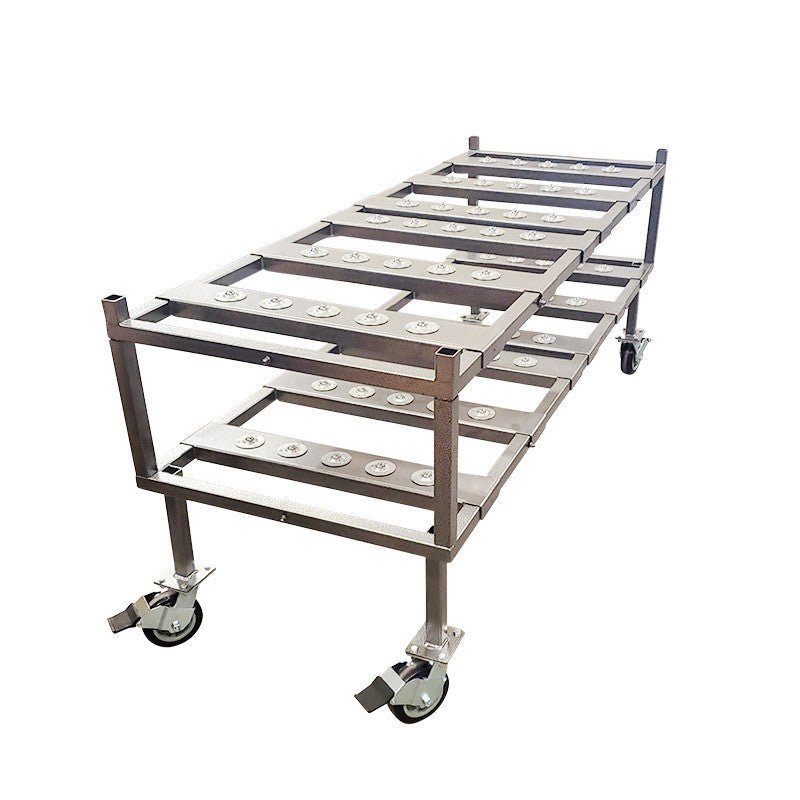Understanding Dead Body Preservation
When a loved one passes away, time stands still for the family – but not for natural processes. That's where a dead body freezer comes in. These specialized refrigeration units are the unsung heroes of the funeral industry, providing the gift of time during difficult moments.
A dead body freezer isn't just a technical piece of equipment – it's a bridge between loss and closure. These purpose-built mortuary refrigerators maintain the dignity of the deceased by slowing decomposition through carefully controlled temperatures. Standard units typically maintain conditions between 2°C and 5°C (36°F to 40°F), while specialized freezing units can reach as low as -15°C (5°F) for extended preservation.
The technology behind these systems balances respect with practical necessity. Modern units feature stainless steel interiors that are both durable and easy to sanitize, wrapped in high-density polyurethane insulation for energy efficiency. Digital temperature controls have replaced older manual systems, offering precise regulation and peace of mind for facility directors.
Quick Facts About Dead Body Freezers:
| Feature | Details |
|---|---|
| Purpose | Preserve human remains, prevent decomposition |
| Temperature Range | Standard: 2°C to 5°C (36°F to 40°F) Freezing: -10°C to -15°C (14°F to 5°F) |
| Typical Preservation Time | Standard units: 6-72 hours Freezer units: Weeks to months |
| Common Sizes | Single-body, 2-body, 4-body, 6-body, 8-body |
| Construction Materials | Stainless steel interiors, polyurethane insulation |
| Price Range | $650 to $7,400 depending on capacity and features |
What many people don't realize is how user-friendly these systems have become. Most dead body freezers (also called mortuary refrigerators or cadaver coolers) work with standard 110V outlets – no special electrical systems or drainage required. They use environmentally friendly refrigerants like R134A, aligning with modern environmental standards while performing their essential function.
Here at American Mortuary Coolers, we've helped countless funeral directors find the right preservation solution for their specific needs. Whether it's a small rural funeral home or a large metropolitan facility, we understand that each situation requires thoughtful consideration of space, budget, and capacity requirements.

Beyond the technical aspects, these preservation systems serve a deeply human purpose. They give families the precious time needed to gather from distant locations, make arrangements that honor their loved one's wishes, and begin the emotional journey of saying goodbye. In this way, a dead body freezer is as much about caring for the living as it is about preserving the deceased.
If you're looking to learn more about specific aspects of mortuary refrigeration, we've created several in-depth guides on related topics, including mortuary refrigeration systems, specimen refrigerators, and morgue drawers.
What Is a Dead Body Freezer?
When families lose a loved one, time stands still – but biology doesn't. That's where a dead body freezer comes in. These specialized refrigeration units (sometimes called mortuary refrigerators, cadaver coolers, or coffin freezers) provide the dignified preservation needed during life's most difficult transitions.
At American Mortuary Coolers, we've spent decades perfecting these essential units for funeral homes, hospitals, medical examiners' offices, and disaster response teams nationwide. Our freezers aren't just equipment – they're a bridge that gives families the precious gift of time.
These specialized units work similarly to your kitchen refrigerator but with crucial differences designed specifically for human remains. Modern dead body freezers use environmentally friendly R134A refrigerant, eliminating the harmful CFCs that once damaged our ozone layer.
The construction is thoughtfully engineered with thick polyurethane foam insulation (up to 8cm) that maintains steady temperatures while keeping energy costs reasonable. Inside, you'll find stainless steel chambers – typically grades 201, 202, or 304 – that resist corrosion, clean easily, and stand up to years of use.
As our Complete Guide to Morgue Cooler Temperature Standards explains, proper temperature control isn't just a technical detail – it's essential for preserving dignity and meeting public health requirements.
Dead Body Freezer Technology Explained
The cooling system in a dead body freezer works through a carefully orchestrated process optimized for the unique needs of mortuary services:
The compressor serves as the heart of the system – we typically use trusted brands like Emerson Copeland, Tecumseh, or SECOP (formerly Danfoss) that operate quietly (essential in peaceful funeral settings) while maintaining energy efficiency. Inside the unit, the evaporator absorbs heat from the chamber, while outside, the condenser releases this heat. The expansion valve regulates refrigerant flow, maintaining ideal pressure throughout the system.
Today's mortuary units feature digital thermostats accurate to within 0.1°C, with easy-to-read displays, high/low temperature alerts, optional data logging, and battery backups for power outages.
Two main cooling approaches exist in modern dead body freezers. Static cooling uses natural convection – quieter but with less uniform temperatures. Forced-air cooling uses fans to circulate cold air throughout the chamber, providing more consistent temperatures, though with slightly higher noise levels and energy use.
Primary Purpose of a Dead Body Freezer
A dead body freezer does far more than simply cool – it preserves dignity and creates possibilities during difficult times.
These specialized units provide temporary storage while families make arrangements, especially important when loved ones need time to travel or when death occurs unexpectedly. By maintaining temperatures between 2°C and 5°C (or lower in freezer models), they significantly slow decomposition, keeping the body in appropriate condition for viewing and services.
In many places, proper refrigeration is legally required when burial or cremation must wait beyond a certain timeframe. The units also maintain the body's condition until embalming or other preparation services can be performed, while protecting public health by preventing the spread of pathogens that multiply in decomposing remains.
As one funeral director from Atlanta told us, "A reliable dead body freezer gives families the gift of time—time to travel, time to process their grief, and time to plan a meaningful service without the pressure of immediate disposition."
For many families, this extra time makes all the difference in creating a meaningful farewell – and that's why we've dedicated ourselves to building the highest quality units in the industry.
Types and Sizes of Dead Body Freezers
The funeral industry needs different types of dead body freezers to match their unique requirements, available space, and the number of bodies they handle. At American Mortuary Coolers, we make and provide a wide range of options to fit these different needs.

Single & Two-Tray Dead Body Freezer Units
When space is tight or needs are modest, our compact units shine. These smaller dead body freezers typically measure about 38" wide × 94" deep × 83" tall with the cooling unit attached. They're perfect for small funeral homes or as backup storage for larger operations.
Most of these units plug right into a standard wall outlet, making installation a breeze. We often add casters to make them mobile - something our customers particularly appreciate when they need to reconfigure their space.
"The single-body unit we purchased last year has been a lifesaver," shared a small-town funeral director from Kentucky. "It fits perfectly in our preparation room and gives us flexibility when we have unexpected situations."
These compact coolers serve many unique purposes beyond traditional funeral homes. Some are designed for ambulances and medical examiner vehicles. We've even created specialized portable units for families choosing home funerals, allowing them to care for their loved ones in familiar surroundings before the formal services.
For facilities handling fewer than 100 deaths yearly, these smaller units often make the most financial sense, as outlined in our Ultimate Checklist for Finding a Mortuary Freezer Near Me.
High-Capacity Walk-In Dead Body Freezers
When volume demands more space, our walk-in coolers and freezers provide an efficient solution. These larger dead body freezers use prefabricated panels that fit together like a puzzle, making installation relatively straightforward even in challenging spaces.
The beauty of our panel system lies in its flexibility - we can configure units to hold anywhere from 4 to 30 bodies depending on your needs. If your requirements grow down the road, the modular design allows for expansion without starting from scratch.
Inside, stainless steel surfaces make cleaning and sanitizing straightforward - a critical feature when handling human remains. Each unit comes with precise digital temperature controls and alarm systems to ensure consistent preservation.
Many of our clients improve their walk-in units with rolling racks or telescoping trays. As one medical examiner from our Atlanta service area told us, "The sliding trays make body handling so much more dignified and easier on my staff's backs."
These larger systems are workhorses for busy metropolitan funeral homes, hospital morgues, medical examiner offices, and disaster preparedness teams who need reliable, high-capacity refrigeration.
Mobile & Trailer-Based Solutions
Sometimes, you need cooling power where permanent installation isn't possible. Our mobile dead body freezer solutions bring refrigeration wherever it's needed - from disaster sites to remote locations.
Our trailer-mounted units come complete with everything needed for immediate deployment. They're particularly valuable for disaster response teams who need to set up temporary morgue facilities quickly.
For military applications or extreme conditions, our containerized systems transform shipping containers into fully-functional morgue facilities. These rugged units withstand harsh environments while maintaining precise internal temperatures.
"During hurricane recovery last year, your mobile unit was the difference between chaos and dignity," a FEMA coordinator told us. "We had it operational within an hour of arrival."
All our mobile solutions feature generator compatibility for areas without reliable power, reinforced floors for safe transport, and self-contained systems requiring minimal setup. From our Tennessee headquarters, we've delivered these specialized units to clients in all 48 contiguous states.
| Type | Capacity | Footprint | Power Requirements | Best For |
|---|---|---|---|---|
| Single Body | 1 body | 38" × 40" × 83" | 110V standard outlet | Small facilities, backup |
| Two-Body | 2 bodies | 38" × 94" × 83" | 110V standard outlet | Small to medium facilities |
| Three-Body | 3 bodies | 57" × 96" × 83" | 110V standard outlet | Medium facilities |
| Walk-In (small) | 4-6 bodies | 8' × 8' × 8' | 220V dedicated circuit | Medium to large facilities |
| Walk-In (large) | 8-30 bodies | Custom dimensions | 220V/3-phase | Major facilities, ME offices |
| Mobile/Trailer | 2-12 bodies | Varies by model | Generator compatible | Disaster response, temporary |
Temperature, Preservation Time & the Science Behind It
The magic of a dead body freezer lies in its ability to control temperature with precision. Like a pause button for nature's processes, these specialized units slow the inevitable march of decomposition through carefully calibrated cooling.
According to our guide Morgue Freezer Temperature 101: How Cold is a Morgue Freezer?, different preservation needs require different temperature settings.
Standard mortuary refrigerators typically operate within these carefully determined ranges:
For short-term storage lasting 6-72 hours, positive temperatures between 2°C and 5°C (36°F to 41°F) work wonderfully. This range slows bacterial growth significantly without freezing tissues, keeping the body in excellent condition for viewing and services.
At exactly 0°C (32°F), we reach the freezing point of water – a transition zone where some bacterial activity might still occur, but decomposition slows dramatically.
When longer preservation is needed, negative temperatures from -10°C to -20°C (14°F to -4°F) create a frozen state that virtually halts decomposition. These colder units are perfect for forensic work or situations requiring weeks or months of preservation.
The science behind refrigeration is fascinating yet simple. By lowering temperature, we're essentially putting the brakes on four key processes: bacterial multiplication, enzymatic reactions within the body's tissues, insect activity, and moisture movement. As noted in scientific research on low-temperature preservation, each 10°C drop in temperature roughly doubles preservation time.
How Long Can a Body Stay in a Dead Body Freezer?
"How long?" is perhaps the most common question we hear from funeral directors. The answer depends on several factors, but temperature is the most critical.
For short-term preservation up to a week, standard refrigeration units (2°C to 5°C) work perfectly. The body remains pliable for preparation, with minimal visible changes – ideal for typical funeral delays when families need time to gather or make arrangements.
When medium-term preservation of 1-3 months is needed, specialized freezer units operating at subzero temperatures (-10°C to -15°C) become necessary. These units are invaluable for extended legal holds or complex forensic cases, though they require thawing before funeral preparation.
For rare situations requiring long-term preservation beyond three months, deep freezing units (-20°C or lower) come into play. These are primarily used in research settings or very special circumstances.
The condition of the remains makes a tremendous difference too. Bodies placed in refrigeration shortly after death preserve much better than those with delayed cooling. As one pathologist we work with in Chicago puts it: "Time is the enemy in body preservation. The sooner a body is placed in proper refrigeration, the better the outcome—regardless of how advanced your dead body freezer might be."
Other factors affecting preservation include the deceased's build (larger bodies take longer to cool completely), pre-existing medical conditions, and the stability of the refrigeration unit itself.
Impact of Temperature Fluctuations on Dead Body Freezer Performance
Even the smallest temperature fluctuations can impact preservation quality. That's why modern dead body freezers incorporate sophisticated safeguards against the unexpected.
Power failures pose the most common challenge, but today's systems come prepared. Our units feature battery backups that maintain temperature displays and alarms for up to 72 hours during outages. The heavy polyurethane insulation slows warming significantly, buying precious time until power returns.
Advanced temperature monitoring has become standard in quality units. Digital data logging captures temperature history, while multiple internal sensors provide comprehensive monitoring. External displays allow staff to check conditions without opening doors – a simple feature that prevents unnecessary temperature fluctuations.
For facilities where uninterrupted preservation is absolutely critical, redundant systems provide peace of mind. These might include backup generators with automatic transfer switches, secondary cooling systems, dual compressors with failover capabilities, and remote monitoring with round-the-clock alerts.
At American Mortuary Coolers, our units installed throughout the Midwest feature triple-redundant temperature monitoring and alert systems. This might seem like overkill, but when you're responsible for preserving someone's loved one, there's no such thing as being too careful.
The relationship between temperature, time, and preservation is both a science and an art. Understanding these connections helps funeral professionals provide the dignified care families deserve during their most difficult moments.
Buying Guide: Selecting the Right Dead Body Freezer
Choosing the appropriate dead body freezer for your facility doesn't have to be overwhelming. Here at American Mortuary Coolers, we've guided hundreds of funeral directors through this important decision, and we're happy to share our insights with you.

When we sit down with clients, we always start by talking about their real-world needs. How many bodies do you typically handle at once? Do you experience seasonal rushes? Are you planning to grow your business in the next few years? A funeral home that handles 50 cases a year has very different needs than one handling 500, and we'll help you forecast your capacity needs accordingly.
Space is another crucial consideration. I remember visiting a funeral home in a historic building with narrow doorways and a tight basement – we had to get creative with a modular solution that could be assembled on-site. Take accurate measurements of your available space, including doorways for installation access. Don't forget to check your floor's load capacity, especially for those larger multi-body units.
Power requirements matter too. Most of our standard units happily run on regular 110V circuits – just plug them in and you're good to go. Larger walk-in systems might need 220V or 3-phase power, so it's worth checking with your electrician before making a decision. We also recommend considering backup power options, especially in areas prone to outages.
Budget considerations are always front of mind for our clients. Our smaller, single-body units start around $650, with standard 2-4 body units ranging from $2,500 to $5,000. Walk-in systems typically run $5,000-$7,400 or more, depending on customization. Remember though – this is an investment in reliability and dignity for your families. As one of our Kentucky clients told me, "I'd rather spend a little more upfront than explain to a family why their loved one wasn't properly preserved."
Energy efficiency impacts your bottom line too. Look for units with high R-value insulation and energy-efficient compressors. The difference between a basic unit and an energy-efficient model might save you hundreds of dollars annually in electricity costs.
Don't forget about delivery and installation. Most of our dead body freezers ship within 15 days after order confirmation, and we coordinate delivery nationwide. Some units arrive fully assembled, while others (particularly walk-ins) require on-site assembly. We'll help you plan for any special requirements, from forklift access to doorway clearances.
For more detailed information on matching specific freezer types to your facility needs, check out our guide on Types of Morgue Freezers and Their Uses.
Key Features Checklist for Dead Body Freezers
When comparing different dead body freezer models, pay special attention to the heart of the system – the compressor. We use trusted brands like Emerson, Tecumseh, and SECOP/Danfoss because reliability matters. Nothing's worse than a compressor failure during a summer heatwave (trust me, we've gotten those emergency calls).
Temperature control systems vary widely in quality. Digital controls offer precision down to ±0.1°C and often include alarm functions that alert you before small problems become big ones. These systems might cost more initially, but they provide peace of mind that's hard to put a price on.
Security features are non-negotiable in our industry. All our units come with lockable doors and heavy-duty hardware. Some facilities, especially those in medical examiner settings, opt for digital access controls that create an audit trail of who accessed the unit and when.
Consider mobility needs too. A funeral director from our Nashville service area recently told me how grateful he was for the high-quality casters on his unit when they needed to temporarily relocate it during a renovation. If you think you might need to move your unit occasionally, those locking casters are worth their weight in gold.
"The difference between a basic dead body freezer and a premium one becomes apparent during power outages, peak seasons, and when you're handling special cases," notes a funeral director from our Pittsburgh service area. "Investing in quality features pays dividends in reliability and peace of mind."
Legal, Ethical & Health Regulations
Compliance isn't optional when it comes to dead body freezers, and the regulations can vary significantly by location. OSHA sets standards for bloodborne pathogens, chemical hazards, and electrical safety that apply nationwide. Your state funeral board likely has specific requirements about storage duration, temperature documentation, and regular inspections.
Infection control is increasingly important. Modern units feature stainless steel interiors that can withstand hospital-grade disinfectants without degradation. Proper ventilation and fluid management systems protect both the deceased and your staff from potential hazards.
Documentation requirements have become more stringent over the years. Many jurisdictions now require temperature logs to be maintained for 1-3 years. We've built digital logging systems into many of our newer models to make this easier, but even basic units should have a reliable way to monitor and record temperatures.
Chain of custody considerations shouldn't be overlooked. Secure, lockable storage with documented access procedures protects both the deceased and your facility from potential issues. As one medical examiner client told us, "Documentation is your best defense when questions arise."
At American Mortuary Coolers, we design our units to meet or exceed regulations in all 48 contiguous states. Whether you're working under the strict requirements of New York or the varied standards across our Southwest Region, we'll help ensure your dead body freezer keeps you compliant and your families served with dignity.
Operating, Maintenance & Compliance Essentials
Proper operation and maintenance of dead body freezers are essential for longevity, efficiency, and compliance. Our experts at American Mortuary Coolers recommend these practices to clients across our service territories.

Running a mortuary cooler isn't just about plugging it in and forgetting about it. Think of your dead body freezer as a specialized medical device that requires consistent attention. Start your day by checking and logging temperatures at least twice – once in the morning and once before closing. This isn't just good practice; in most jurisdictions, it's a legal requirement.
"Temperature logs are the first thing inspectors ask for," says Maria, a funeral director who's been using our systems for over a decade. "They're your proof that you've maintained dignity and proper care."
Beyond temperature monitoring, take a moment each day to inspect door seals and verify that alarm systems are functioning properly. When placing bodies, ensure there's adequate space between them for proper air circulation – crowding can create warm spots and uneven cooling.
Cleanliness isn't just about appearances – it's about infection control and odor management. Develop a regular cleaning schedule using hospital-grade disinfectants specifically designed for stainless steel surfaces. Pay special attention to handles, latches, and other frequently touched areas. Document your cleaning routine – this documentation can be invaluable during inspections or in case of any issues.
Quarterly maintenance checks should focus on door seals and gaskets, which can deteriorate over time. Twice a year, have your refrigeration system professionally inspected, with particular attention to the compressor and condenser. Annual calibration of temperature sensors ensures your readings remain accurate and reliable.
Most modern dead body freezers include automatic defrost cycles, but don't take this feature for granted. Verify that the system is working properly and that condensate is draining correctly. If you notice ice building up on evaporator coils, it's a sign that something needs attention before it becomes a bigger problem.
As outlined in Freeze Frame: A Guide to Body Storage Freezers, proper refrigerant management is both an operational and environmental responsibility. Develop protocols for leak detection, ensure any refrigerant handling complies with EPA regulations, and maintain records of any refrigerant additions or service.
Odor control is an often-overlooked aspect of mortuary refrigeration. Consider installing activated carbon filtration systems, ensure proper body preparation before placement, and maintain ventilation systems regularly. Keep enzymatic cleaners on hand for managing any fluid spills quickly and effectively.
Troubleshooting Common Dead Body Freezer Issues
Even the best-maintained equipment occasionally has issues. Knowing how to address common problems can save you time, money, and potential complications.
Ice build-up is one of the most frequent challenges we see in dead body freezers. This typically stems from excessive door opening, faulty door seals, or improper defrost cycles. Start by checking door gaskets for wear and tear, verify your defrost timer is operating correctly, and remind staff about proper door closure procedures.
Door seals fail eventually – it's not a matter of if but when. Regular inspection can catch problems early. Look for cracks, tears, or hardening in the rubber. When cleaning gaskets, avoid harsh chemicals that can degrade the material prematurely. A simple solution of mild soap and water works best for routine cleaning.
High humidity inside your unit often indicates either frequent door opening or drainage problems. Train staff to minimize the time doors remain open, and regularly check that condensate drains aren't clogged. In particularly humid environments, consider supplemental dehumidification systems.
"If your compressor suddenly sounds different, pay attention," advises Tony, our senior technician from our Tennessee headquarters. "Changes in sound usually mean something's wrong." Verify proper mounting, check refrigerant levels, and if noise increases or changes character, schedule professional service promptly rather than waiting for a complete failure.
Temperature fluctuations require immediate investigation. Start with the basics: check sensor placement and function, verify controller settings, and inspect for refrigerant leaks. Modern digital systems usually provide error codes that can help pinpoint issues quickly.
Complementary Equipment Used with Dead Body Freezers
A dead body freezer rarely works in isolation – complementary equipment improves functionality and staff safety while ensuring dignified handling of the deceased.
Body bags and pouches are essential companions to any mortuary refrigeration system. We recommend heavy-duty vinyl or polyethylene construction with thicknesses ranging from 4-12 mil depending on your needs. Look for leak-proof designs with strong zippers and clear identification features to maintain proper chain of custody.
Body trays deserve careful consideration – they're the interface between the deceased and your refrigeration system. Stainless steel offers durability and easy cleaning, while polymer options reduce weight and cold transfer to staff hands. Ensure your trays include drainage features for fluid management and check that they're compatible with your lifting systems.
Speaking of lifting, hydraulic or manual lift systems protect your staff from injury while facilitating single-person transfers. "The investment in a good lift system pays for itself in prevented back injuries alone," notes Sarah, a funeral home manager from our Midwest region. Modern systems are adjustable to work with various cooler heights and configurations.
Access ramps with non-slip surfaces make body placement safer and more efficient, especially with roll-in units. Look for removable designs that don't take up valuable floor space when not in use, and verify weight ratings to ensure they can handle fully loaded trays safely.
Don't overlook personal protective equipment – disposable gowns, nitrile gloves, face protection, and appropriate footwear protect your staff while handling the deceased. Specialized ventilation systems with odor control technology and HEPA filtration add another layer of protection while maintaining a pleasant environment for families and staff alike.
At American Mortuary Coolers, we understand that a dead body freezer is just one part of your complete mortuary operation. That's why we provide comprehensive solutions including these complementary items, ensuring our clients from coast to coast have everything needed for efficient, dignified, and compliant operations.
Real-Life Challenges & Case Studies
The stories I'm about to share highlight why proper dead body freezer selection, maintenance, and operation isn't just important—it's essential. These real-world examples from our experience at American Mortuary Coolers show both the successes and the sobering lessons learned.
When Hurricane Katrina devastated Louisiana, our mobile mortuary units proved their worth in the most challenging conditions imaginable. These specialized dead body freezers operated continuously for weeks, often with unreliable power sources, providing dignified temporary storage for victims until proper identification and processing could occur. The resilience of these units during crisis conditions demonstrated why purpose-built equipment matters.
A funeral home client in our Chicago service area experienced what every funeral director fears—a prolonged power outage during a sweltering summer heat wave. Thankfully, their dead body freezer featured our advanced insulation system and battery-backed monitoring, which maintained viable temperatures for over 36 hours until power was restored. Not a single family experienced additional trauma from compromised remains, showing how quality equipment provides peace of mind when it matters most.
The Las Vegas freezer incident, captured on police body-cam footage, serves as a stark reminder of the serious legal and ethical issues that arise when human remains aren't properly stored. This troubling case underscores why professional, purpose-built mortuary refrigeration is necessary—repurposed consumer appliances simply aren't designed for this sacred responsibility.
I remember working with a hospital in our Atlanta service region that initially installed a 4-body dead body freezer, only to find it was woefully insufficient during seasonal flu surges. Together, we developed a modular solution that could expand during peak periods. Their experience teaches an important lesson about flexible capacity planning that many of our clients have since benefited from.
Lessons Learned from High-Profile Dead Body Freezer Failures
Behind every equipment failure is a valuable lesson. A medical examiner's office experienced a catastrophic breakdown of their walk-in dead body freezer that could have been prevented. The investigation revealed condensers hadn't been cleaned for years, leading to compressor failure. Now, this office has implemented rigorous maintenance schedules and keeps detailed service records—a practice we recommend to all our clients.
During a regional COVID-19 surge, one funeral home tried to accommodate more bodies than their dead body freezer was designed to handle. With compromised air circulation, some areas experienced uneven cooling and accelerated decomposition. The director later told me, "We thought we were doing the right thing by accepting more families in need, but we ended up creating more problems." This experience reinforced why we now help clients develop emergency overflow arrangements before they're needed.
The legal consequences of equipment failure can be severe. A funeral home faced significant liability when their improperly installed dead body freezer failed, resulting in decomposition before a scheduled viewing. The heartbreak for the family—and the subsequent lawsuit—emphasized that proper installation by qualified professionals is never an area for cutting corners.
A particularly troubling case involved a hospital morgue that relied solely on manual temperature checks of their dead body freezer without any alarm systems. A weekend failure went undetected for 48 hours with devastating results. This incident prompted the facility to implement our 24/7 remote monitoring and alert systems, which have since prevented similar situations multiple times.
As I often tell clients across our service regions: "The cost of proper equipment, installation, and maintenance is always less than the cost of failure—both financially and in terms of your reputation and peace of mind."
At American Mortuary Coolers, we believe that sharing these experiences, though sometimes difficult, helps our entire industry provide better care for the families we all ultimately serve.
Frequently Asked Questions about Dead Body Freezers
What temperature should a dead body freezer be set at?
When families ask me about temperature settings for a dead body freezer, I always explain that it's about finding the right balance for your specific needs.
For most funeral homes handling viewings and services within a few days, keeping the temperature between 2°C and 5°C (36°F to 41°F) works perfectly. This range slows decomposition significantly while keeping the body in ideal condition for preparation services.
If you're looking at longer storage needs—perhaps waiting for family to travel from overseas—you might consider cooler temperatures. Medium-term storage of up to two weeks often works best at 0°C to -5°C (32°F to 23°F), which provides better preservation while minimizing tissue changes.
For those rare situations requiring months of preservation, such as in forensic cases or research settings, temperatures between -10°C and -20°C (14°F to -4°F) become necessary.
I remember a conversation with a medical examiner in Memphis who put it perfectly: "Temperature selection isn't just about keeping things cold—it's finding that sweet spot between preservation and maintaining the dignity of the person in your care."
How long can a deceased person remain in a dead body freezer without embalming?
This is one of the most common questions I hear from funeral directors considering new refrigeration equipment. The answer depends on several factors, but I can give you some helpful guidelines.
In a standard dead body freezer set at 2°C to 5°C, most bodies can be preserved for 3-7 days with minimal visible changes. This gives families adequate time to make arrangements while maintaining viewing quality.
For freezer conditions at -10°C or lower, preservation can extend to weeks or even months with proper humidity control. This is particularly valuable for medical examiners or in situations with extended legal holds.
The timeline can vary based on how quickly the body was placed in refrigeration after death, the individual's condition, and how stable your unit maintains temperature. I always remind funeral directors that starting refrigeration within the first 24 hours after death provides the best results.
One funeral director in Nashville shared that his dead body freezer gave a military family the precious gift of time—allowing them to wait for a service member to return from overseas before holding their father's funeral. These moments of compassion are what quality refrigeration is all about.
What happens if the power goes out while a body is stored?
Power outages can certainly be stressful, but modern dead body freezer units are designed with these situations in mind.
First, don't panic! A well-insulated unit (like those with our 8cm polyurethane insulation) can maintain cold temperatures for 12-24 hours if you keep the doors closed. This built-in thermal retention gives you valuable time to implement your backup plan.
Today's advanced models include several protective features that provide peace of mind. Battery backups can keep temperature displays and alarm systems functioning for up to 72 hours. Some units include automatic transfer switches that connect seamlessly to generator power when needed. Many funeral homes also appreciate remote monitoring systems that send alerts to your phone if temperatures begin to rise.
Having clear emergency protocols makes all the difference. This includes simple steps like minimizing door openings, having portable cooling options available, and maintaining transfer agreements with nearby facilities if needed.
I worked with a funeral home in Florida that weathered Hurricane Ian without losing a single body, despite being without power for nearly three days. Their combination of a high-quality dead body freezer and well-planned backup systems ensured they could continue serving families during an incredibly difficult time.
At American Mortuary Coolers, we believe peace of mind comes from being prepared. That's why we help every customer think through power backup options during installation, especially in areas prone to weather-related outages.
Conclusion
Selecting the right dead body freezer is one of the most important decisions funeral homes, hospitals, and medical examiner facilities will make. These aren't just refrigeration units—they're essential tools that preserve dignity, fulfill legal requirements, and give families the precious gift of time during their most difficult moments.
Here at American Mortuary Coolers, we've dedicated decades to perfecting our designs. We understand the unique challenges faced by death care professionals from coast to coast. Our team has worked with facilities of all sizes, from small-town funeral homes in rural Tennessee to major metropolitan medical centers in New York and Los Angeles.
What sets us apart isn't just the quality of our equipment—though we take immense pride in our durable, efficient designs. It's our commitment to treating each installation as a partnership rather than just a transaction. We believe in creating custom solutions that fit your specific needs, not one-size-fits-all approaches.
Our comprehensive support includes:
When you work with American Mortuary Coolers, you're getting more than just equipment. You receive personalized consultation, direct delivery anywhere in the contiguous 48 states, expert installation with thorough staff training, and ongoing maintenance support—including emergency service when those inevitable urgent situations arise.
The proper preservation of human remains balances technical expertise with profound respect. Whether you're operating a small funeral home needing a single-body unit or managing a major medical center requiring a walk-in system for dozens of bodies, the core principles remain unchanged: reliability, dignity, and compassionate care.
We understand that behind every body in your care is a family in mourning, and your ability to preserve their loved one with dignity directly impacts their grieving process. That's why we never compromise on quality, from the thickness of our insulation to the reliability of our cooling systems.
As one of our long-time customers, a funeral director from Virginia, recently told us: "In twenty years of operating your coolers, we've never had a failure. That peace of mind is priceless in our profession."
We invite you to learn more about industry-leading American Mortuary Coolers and find how our expertise can support your mission of providing exceptional care for the deceased and their families. Because when it comes to honoring those who have passed, only the best will do.



